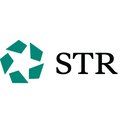One In Five US Hotels Selling At Least 90% Of Rooms
Average Daily Rates Dip Slightly From Record High
Slightly better than one in every five hotels in the U.S. sold more than 90% of their rooms in the week ending July 17 — the most since the summer of 2019 — but hotel rates edged down from all-time highs reached the week prior.
U.S. hotel average daily rate was still the second highest in history, according to the latest weekly data from STR, CoStar’s hospitality analytics firm. ADR in 60 of the 166 STR-defined markets decreased by 1% or more from the previous week. Despite the decline, ADR across all U.S. markets was higher than it was in the comparable week of 2019 for the third-straight week. Weekend ADR has surpassed 2019 levels for eight weeks.
The latest Market Recovery Report from STR shows 86% of all U.S. hotel markets in the “recovery” or “peak” categories for the week, with revenue per available room 80% or better than 2019 levels.
On a 28-day moving average, which smooths out the impact of holiday calendar shifts on performance comparisons, more than half of markets (54%) achieved “peak” RevPAR, surpassing the level achieved during the same week in 2019.
Fifty-four U.S. hotel markets (33%) entered the “recovery” category, up from 30% the prior week, but 20 markets remained in the “recession” category, with RevPAR between 50% and 80% of 2019 levels, and three markets — San Francisco, San Jose and New York City — were in the “depression” category, with RevPAR less than half of 2019 levels. On the whole, the U.S. hotel industry remained in the “recovery” category for the sixth week.
Across all markets, U.S. hotel occupancy averaged 71%, the highest level since the Columbus Day holiday week of October 2019. It also marked the first time since the week of Oct. 19, 2019, that daily occupancy Wednesday through Saturday was above 70%. Weekend occupancy also surpassed 80% for the second time this year. Excluding STR’s top 25 markets, occupancy was 72% — the best since late summer 2019. On a total-room-inventory basis, which accounts for temporarily closed hotels, weekly occupancy was 68.2%.
Small (under 75 rooms) and medium (75 to 299 rooms) hotels did even better with occupancy of 73% for the week.
Market Highlights
Weekly hotel occupancy was highest in resort locations at 76%. Occupancy was lowest in urban locations at 63%, but that percentage was higher than it’s been in 72 weeks. Urban hotels, along with airport hotels, led occupancy in summer 2019, when occupancy was 83% for both. Across all locations and segments, more than 76% of all U.S. hotels reported occupancy above 60% for the week.
By market, Gatlinburg/Pigeon Forge, Tennessee, led occupancy for the week at 91%. On the other end of the spectrum, San Francisco remained at the bottom, with just 49% occupancy, as it has for most of the year. Seventeen markets reported occupancy of 80% or more for the week, compared to 59 in the same week of 2019.
Demand was up across nearly every market. The largest increase was in Denver, which sold more rooms week over week as the city hosted Major League Baseball’s All-Star Game. Washington, D.C., which has accompanied San Francisco at the bottom in terms of occupancy, posted its largest demand gain since the presidential inauguration as vacation travelers returned with the gradual reopening of attractions.
Hotels in the San Francisco Market Street submarket posted RevPAR that was only 27% of the level achieved during the same week in 2019 — the lowest of all U.S. submarkets. The second-lowest RevPAR index was posted in the New York Midtown East submarket, which achieved only 31% of 2019 levels.
On the other end, the Round Rock/Georgetown, Texas, submarket more than doubled its 2019 RevPAR for the week.
More than half (335 of 654) of all U.S. hotel submarkets posted weekly RevPAR that was higher than it was during the same week in 2019.
Isaac Collazo is VP Analytics at STR.
This article represents an interpretation of data collected by CoStar's hospitality analytics firm, STR. Please feel free to contact an editor with any questions or concerns. For more analysis of STR data, visit the data insights blog on STR.com.
About STR
STR provides premium data benchmarking, analytics and marketplace insights for the global hospitality industry. Founded in 1985, STR maintains a presence in 15 countries with a corporate North American headquarters in Hendersonville, Tennessee, an international headquarters in London, and an Asia Pacific headquarters in Singapore. STR was acquired in October 2019 by CoStar Group, Inc. (NASDAQ: CSGP), the leading provider of commercial real estate information, analytics and online marketplaces. For more information, please visit str.com and costargroup.com.








